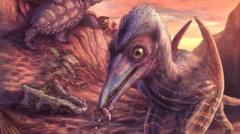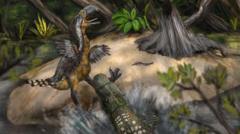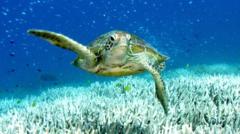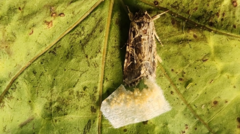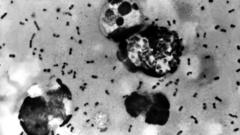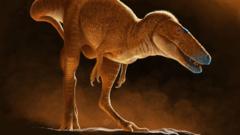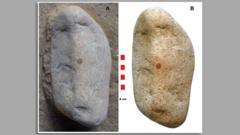In an astonishing discovery that dates back over 200 million years, researchers have unveiled a new species of pterosaur, a flying reptile that once dominated the skies alongside dinosaurs. The species, named Eotephradactylus mcintireae—which translates to "ash-winged dawn goddess"—was identified from a jawbone unearthed in Arizona back in 2011. However, it was only through advances in modern scanning technology that scientists were able to confirm it as a new addition to the pterosaur family.
The research team, led by experts from the Smithsonian's National Museum of Natural History in Washington D.C., disclosed their findings in the Proceedings of the National Academy of Sciences journal. The jawbone, preserved within 209 million-year-old rock, is now recognized as the oldest known pterosaur fossil in North America, shining light on the Triassic period's flying reptiles.
Dr. Ben Kligman of the research team explained the delicate nature of pterosaur fossils: "The bones of Triassic pterosaurs are small, thin, and often hollow, so they get destroyed before they get fossilized." This particular fossil bed, located in Petrified Forest National Park, Arizona, is of exceptional importance. Once part of a riverbed, it has preserved an array of specimens, including bones, fish scales, and even coprolites, which are fossilized dung.
The examination of Eotephradactylus's teeth revealed they exhibited significant wear, indicating it likely preyed on hard-bodied creatures, possibly primitive fish. Dr. Kligman highlighted the fossil bed as a snapshot of an ancient ecosystem, where survival varied between ancient gigantic amphibians, extinct crocodile relatives, and recognizable modern creatures such as frogs and turtles. This discovery not only enriches the scientific understanding of pterosaur evolution but also underscores a period of evolutionary transition that characterizes the dynamic interplay between species during the Triassic epoch.
In researching these rare fossils, scientists suggest that there may be more pterosaur remains hidden in similar Triassic deposits worldwide, awaiting discovery. The findings emphasize the rich, yet fragile, narrative of life's early history on Earth.
The research team, led by experts from the Smithsonian's National Museum of Natural History in Washington D.C., disclosed their findings in the Proceedings of the National Academy of Sciences journal. The jawbone, preserved within 209 million-year-old rock, is now recognized as the oldest known pterosaur fossil in North America, shining light on the Triassic period's flying reptiles.
Dr. Ben Kligman of the research team explained the delicate nature of pterosaur fossils: "The bones of Triassic pterosaurs are small, thin, and often hollow, so they get destroyed before they get fossilized." This particular fossil bed, located in Petrified Forest National Park, Arizona, is of exceptional importance. Once part of a riverbed, it has preserved an array of specimens, including bones, fish scales, and even coprolites, which are fossilized dung.
The examination of Eotephradactylus's teeth revealed they exhibited significant wear, indicating it likely preyed on hard-bodied creatures, possibly primitive fish. Dr. Kligman highlighted the fossil bed as a snapshot of an ancient ecosystem, where survival varied between ancient gigantic amphibians, extinct crocodile relatives, and recognizable modern creatures such as frogs and turtles. This discovery not only enriches the scientific understanding of pterosaur evolution but also underscores a period of evolutionary transition that characterizes the dynamic interplay between species during the Triassic epoch.
In researching these rare fossils, scientists suggest that there may be more pterosaur remains hidden in similar Triassic deposits worldwide, awaiting discovery. The findings emphasize the rich, yet fragile, narrative of life's early history on Earth.

